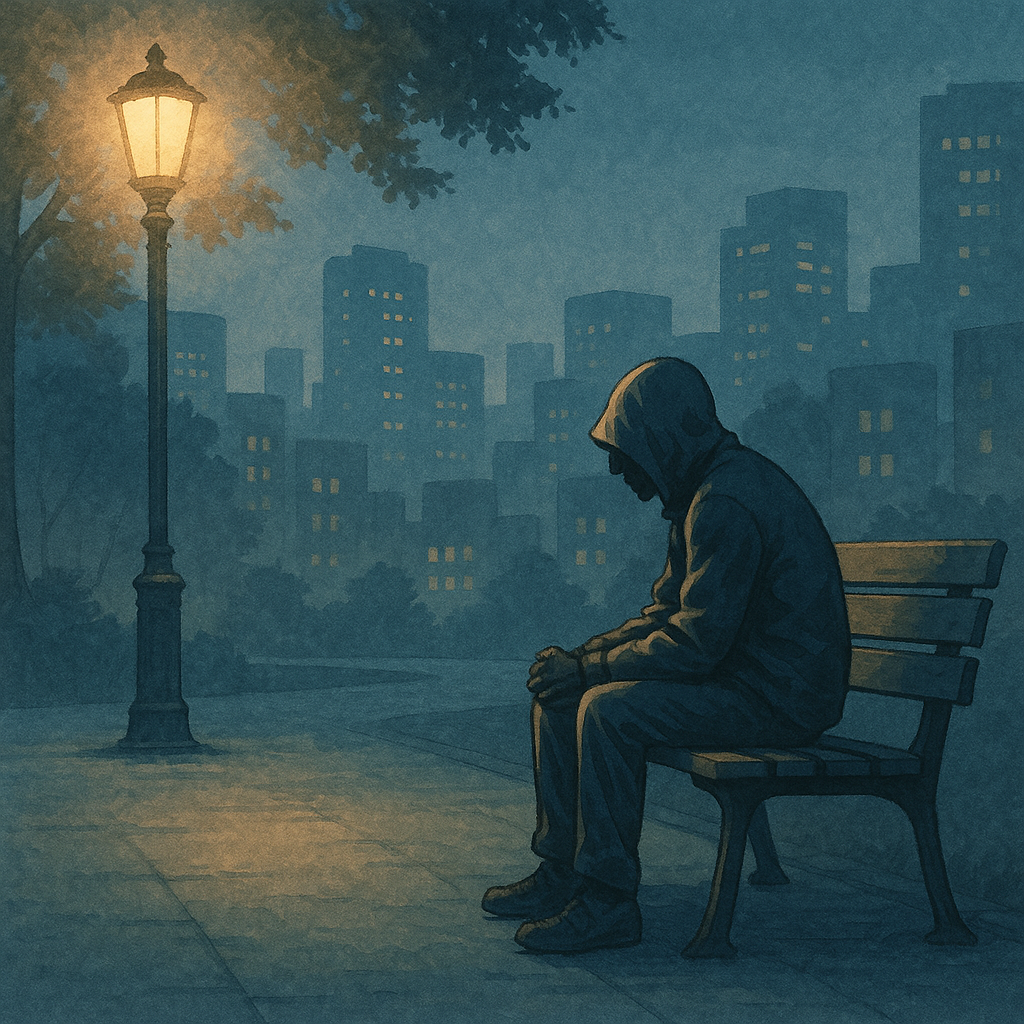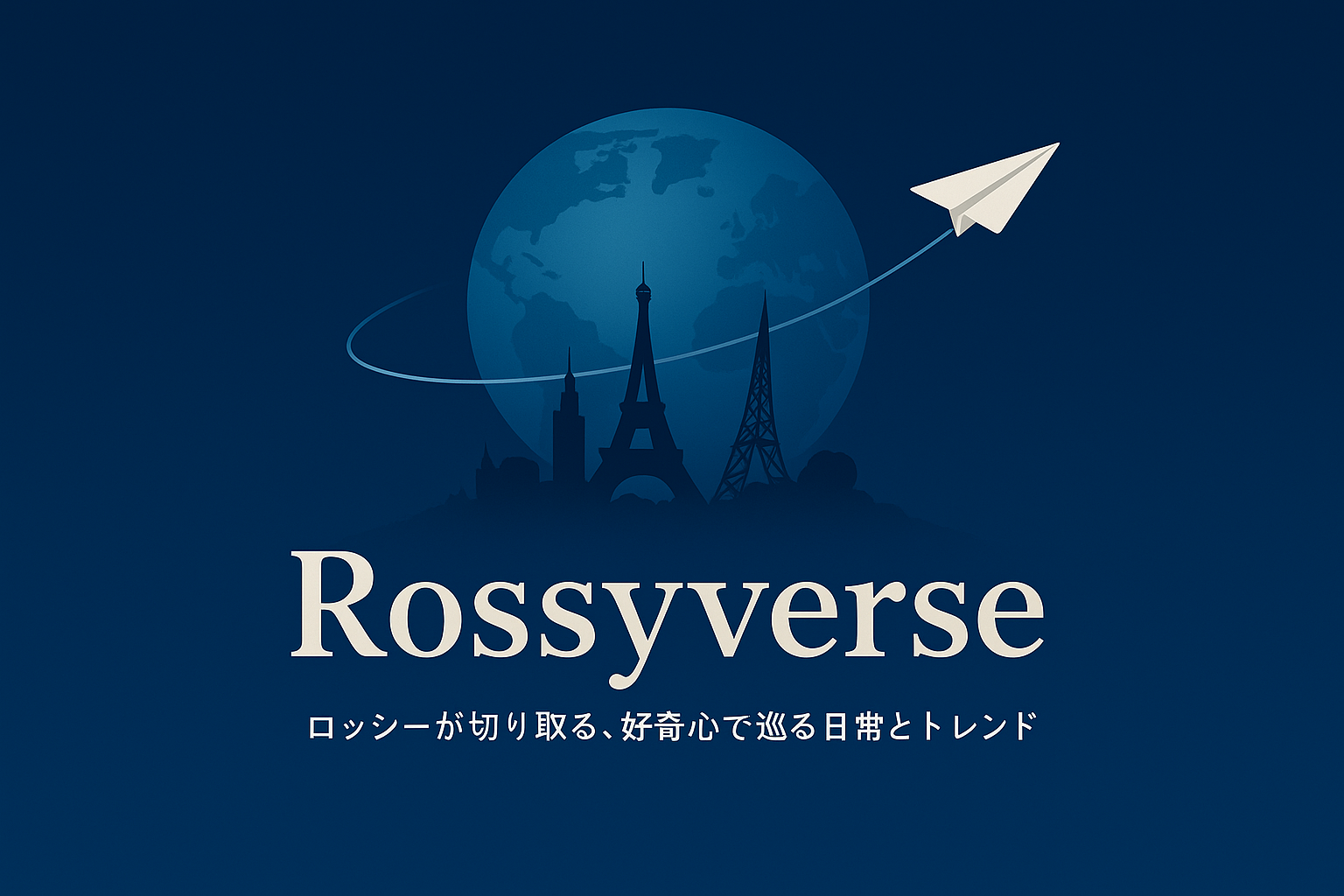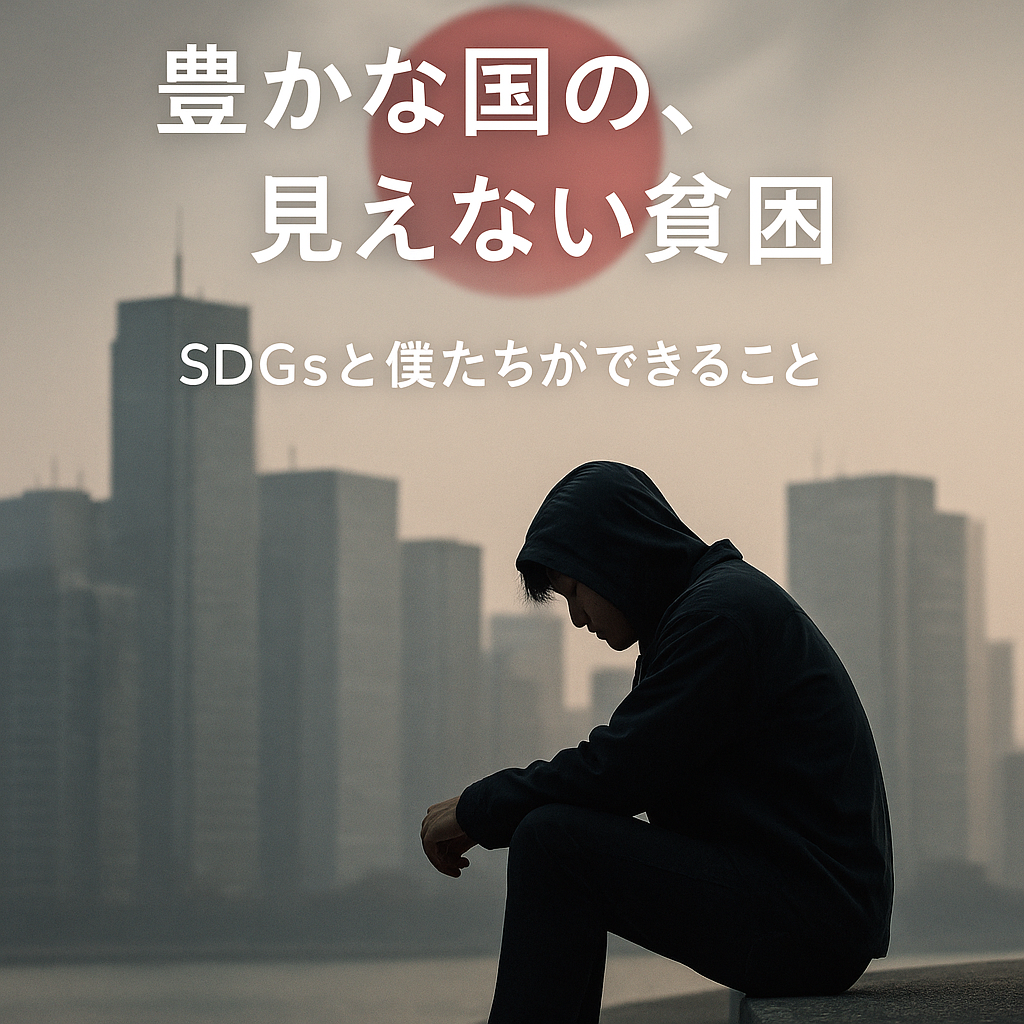かつて、貧困と聞くと、どこか遠い国の出来事のように感じていた。
雨風をしのぐ家もなく、食べ物にも困る――そんなイメージを思い浮かべていた僕は、あるときふと目にした数字に、言葉を失った。
「日本の子どもの6人に1人が、貧困状態にある」
先進国として豊かであるはずのこの国で、こんなにも多くの人が、生きづらさの中で声を上げられずにいる。
確かに、道路は整備され、スーパーには食べ物が並び、見た目には“平和”が保たれているように見える。
だけど、その裏には「見えない貧困」が、静かに、でも確実に広がっていた。
今回はSDGsの目標1「貧困をなくそう」を軸に、日本の現状と、僕たちにできる“ささやかな一歩”について考えてみたいと思う。
数字が語る、日本の貧困
「貧困大国・日本」――
そんな言葉を聞いたとき、少し大げさじゃないかと思った。
けれど、統計を見れば、決して誇張ではないことがわかってくる。
相対的貧困率:先進国最下位レベル
日本の相対的貧困率は、約15%前後。
つまり、7人に1人が「日常生活に必要なお金が足りない状態」にある。
子どもの貧困:6人に1人
とくに深刻なのは、子どもの貧困。
厚生労働省のデータでは、6人に1人という水準にまで上昇している。
その多くは、ひとり親世帯や非正規雇用の親を持つ家庭。
表面上は普通の暮らしに見えても、
朝食が食べられない、進学をあきらめる、修学旅行に行けない――
そんな現実が、この国にはある。
ワーキングプア:働いても生活が苦しい
正社員じゃないから、贅沢を言ってはいけない――
そんな考えに縛られてきた“働く貧困層”も、社会に静かに埋もれている。
見えない、声をあげられない貧困
日本の貧困が難しいのは、「見えにくさ」。
声をあげることすら「恥」とされ、沈黙の中で暮らす人たちがいる。
豊かな国なのに、なぜ? ― 国と国民のあいだにある溝
「日本は世界有数の経済大国」
そう言われながら、なぜ生活に困る人がこんなに多いのだろう。
海外資産保有額:世界ダントツ1位
日本の対外純資産は約400兆円超。
世界1位を誇りながらも、その恩恵は国民に届いていない。
所得税・消費税の偏りと再分配の不均衡
消費税は低所得層に重くのしかかり、高所得者ほど負担を逃れやすい構造。
税の再分配がうまくいかない限り、格差は埋まらない。
支援制度が「ある」のに「使えない」
制度があっても、申請の壁や心理的ハードルが高すぎて、
本当に必要な人に届いていない。

それでも、僕たちにできること
社会を変えるのは難しい。
でも、「気づくこと」から始めれば、僕たちにもできることはある。
- フードバンクへの寄付
- NPOや地域支援への協力
- SNSでの発信
- 「誰かのため」を「自分ごと」として考えること
未来に期待すること ― 優しい政治と仕組み
もし未来の政治が、僕たちの暮らしに本当に寄り添ってくれるなら、
こんな社会を目指してほしい。
- 支援を必要とする人に、もっと優しい制度を
- 税の負担を“持っている人たち”がしっかり支える仕組み
- 消費税の見直しと、消費を促進する循環型経済
- シンプルで透明な政治運営
- 教育・医療・福祉にもっと投資できる未来
豊かさとは、なんだろう?
お金や資産だけじゃ測れない“豊かさ”があるとしたら、
それは「分かち合えること」なのかもしれない。
今日感じたこと、知ったことを、
そっと誰かに伝えてみよう。
それが、社会を変える第一歩になる。
🔗あわせて読みたい記事
- [小さな命を守るために ― SDGsと子どもの健康格差]
子どもの健康と医療格差に焦点を当てた記事です。 - [捨てられる食べ物、届かぬ子どもたち ― SDGsと飢餓の現実]
日本における食の不均衡と子どもの飢餓について考察した記事です。
🌍Invisible Poverty in a Wealthy Nation — SDGs and What We Can Do
Introduction
When I used to hear the word “poverty,” I imagined faraway countries — places where people struggled to find shelter and food.
But one day, I came across a statistic that stopped me in my tracks:
“1 in 6 children in Japan live in poverty.”
Japan is considered a wealthy, developed nation.
Yet, so many people live in silence, struggling behind closed doors.
On the surface, our streets are orderly. Supermarkets are full of food. Life appears peaceful.
But beneath that calm exterior lies an expanding problem — invisible poverty.
In this article, I want to explore SDG Goal 1: No Poverty, focusing on Japan’s current situation and the small things we can each do to make a difference.
Chapter 2: What the Numbers Reveal
Japan is often called an economic powerhouse.
So why does it rank near the bottom among developed countries in poverty-related statistics?
📉 Relative Poverty Rate: Among the Worst in the OECD
Japan’s relative poverty rate is around 15%, meaning 1 in 7 people live with less than half the median income.
That’s a large portion of the population struggling to meet basic needs.
👧 Child Poverty: Now 1 in 6
Particularly troubling is child poverty.
Government data shows that 1 in 6 children in Japan are affected. Many come from single-parent households or families relying on unstable employment.
They may look like they’re living normal lives.
But behind that image, some children skip meals, forgo school trips, or are forced to give up on further education.
💼 Working Poor: Employed but Still Struggling
Being employed doesn’t always mean financial security.
Many people work hard, but still can’t afford to live comfortably — they’re known as the working poor.
🧊 Silent Poverty: Hard to See, Hard to Speak About
One of Japan’s biggest challenges is that poverty isn’t always visible.
People may have a home, a phone, clean clothes — but live paycheck to paycheck, avoiding medical care, chasing discounted groceries, and hiding their struggle in silence.

Chapter 3: Why the Gap Between National Wealth and Daily Struggle?
Japan is the world’s largest holder of foreign assets, with over 400 trillion yen in overseas investments.
The country earns massive interest and profits from abroad.
So why doesn’t this wealth benefit everyday people?
💴 Uneven Redistribution
Tax systems, like consumption tax, disproportionately burden lower-income households.
Meanwhile, wealthier individuals and large corporations often have ways to minimize their tax obligations.
Unless the structure of redistribution changes, inequality will continue to grow.
🏛 Support Systems Exist — But Are Inaccessible
Welfare programs exist, but they’re hard to apply for.
Many feel ashamed or pressured at city offices. There’s a stigma attached to asking for help — as if needing support is a personal failure.
Chapter 4: What We Can Do
Changing society isn’t easy.
But that doesn’t mean we’re powerless.
🕯 The First Step Is Awareness
Knowing that poverty exists here — not just “somewhere else” — changes how we see the world.
From there, small actions become possible:
- Donating to food banks or charities
- Sharing reliable information online
- Talking to others about what you’ve learned
- Supporting inclusive policies
Chapter 5: What I Hope for in the Future
If a new political leadership were to emerge, I’d hope for this:
- Stronger safety nets for people in need
- A tax system where the wealthy shoulder more responsibility
- Stimulating economic circulation by easing burdens on ordinary people
- Reinvesting in welfare, healthcare, and education
- Simplifying government and increasing transparency
These aren’t radical ideas — they’re reasonable goals for a fairer society.
Conclusion: What Does It Mean to Be Truly Wealthy?
Wealth isn’t just measured in assets or profits.
It can also be found in our ability to care for one another.
If today’s awareness leads you to speak to someone, take action, or simply feel differently —
then maybe that’s the beginning of something powerful.
A quiet revolution, born not from anger, but from kindness and connection.
I🔗Related Articles
[Food Thrown Away, Children Left Hungry — The Harsh Reality of Hunger and SDGs]
An essay reflecting on food inequality and child hunger in Japan.
[Protecting Tiny Lives — SDGs and the Health Gap Among Children]
An article focusing on children’s health and disparities in access to medical care.




コメント